How to Build an E-commerce Website
From Scratch in 2023:
An A to Z E-commerce Website Development Guide
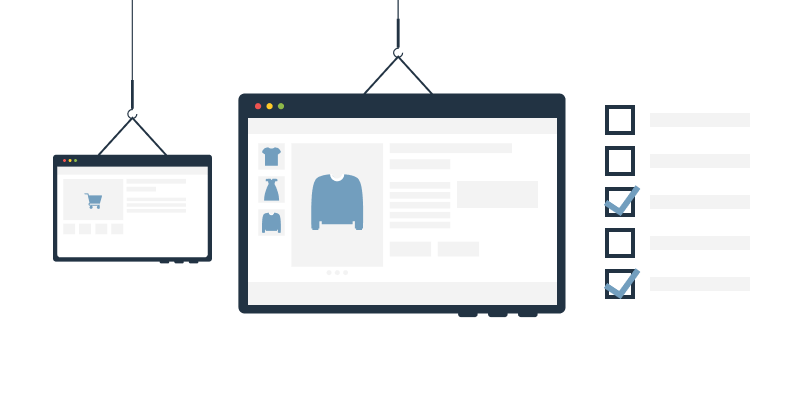
How to Build an E-commerce Website
From Scratch in 2023:
An A to Z E-commerce Website Development Guide
Table of Contents
ToggleE-commerce, or electronic commerce, is the process of selling and buying goods and services via the internet, and processing financial transactions and data to complete this act. It can be performed via smartphones, tablets and computers. Usually people understand e-commerce as buying and selling physical goods online, but any kind of commercial transaction that is done via the internet also refers to this concept.

It is important to not mix up e-commerce and e-business as the first one is characterized by the process of transaction and the second is related to any business that is handled online. For example, these can be online HR solutions, CMS systems, CRMs and so on.
As for any offline business, when you build an e-commerce website from scratch, this process is usually accompanied by specific pros and cons which determine if this type of business is right for you. Access to a large market, high flexibility and lower startup costs compared to offline business are the main advantages of e-commerce for business owners. On the other hand, the need for technical knowledge, online security provisions, and more complex taxation rules can be considered disadvantages.
As an entrepreneur, you understand that starting a new business is always a risk. You need to learn about the main reasons people start an e-business, how they create e-commerce website, and consider if they are decisive enough for you to begin your own e-commerce journey.
Starting an e-commerce business is more affordable than opening a brick-and-mortar store. E-commerce comes with minimal overhead. You don’t need to pay for rent and utilities, and usually it requires less staff and implies fewer operating costs. Though online websites require business owners to regularly spend on costs for technical support like hosting, website updates and maintenance, these expenses are much lower compared to the expenses of traditional stores.
COVID-19 and pandemic restrictions pushed even the most conservative people to make purchases online. This led to a global shift in customer shopping behavior and turned online shopping into one of the most popular activities worldwide.
Statistics show that 43% of global shoppers research products online. So, if you are ready to put efforts into creating an exceptional customer experience in your e-commerce store, this 43% can become your customers.
According to Statista, retail e-commerce sales worldwide amounted to $4.28 trillion in 2020. It is 27.6% more than in 2019. E-retail revenues were projected to grow to $5.9 trillion in 2023. What does this mean for e-commerce merchants? This is the best time to learn how to build e-commerce store as the e-commerce market is growing faster compared to traditional businesses and you have more opportunities to make your online business profitable.
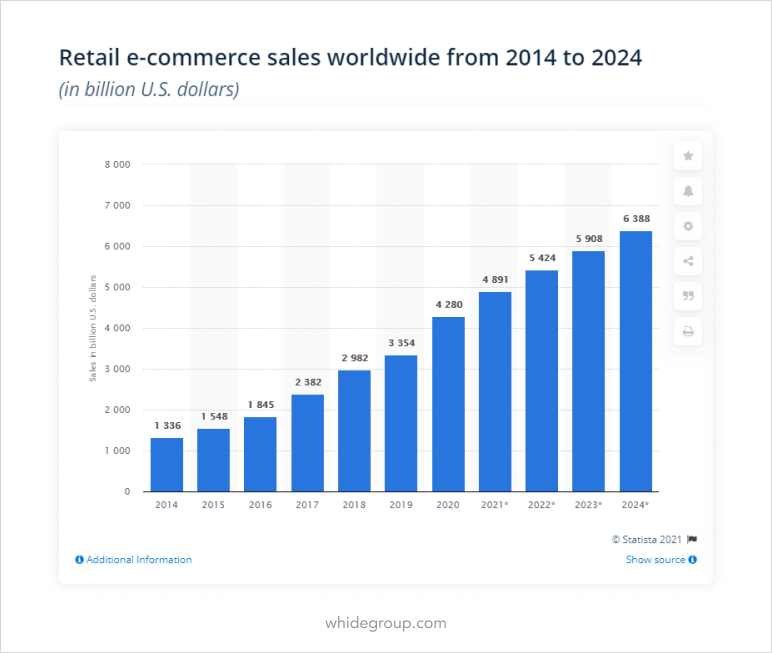
Online presence means a lot for a business nowadays. First of all, e-commerce gives access to a wider market as you are not limited by the physical location of your store. The second point is that it is easier to market your brand online. Also e-commerce is more flexible and adaptable to changes and innovations, so you can attract more customers quickly by simply following new trends and meeting new customer demands.
Like every other project, creating an e-commerce website from scratch requires thorough preparation and planning that will define future activities for your store’s creation. The following points, referring to how to build an e-commerce website from scratch, are fundamental for finding a place for your business on the market, determining technologies to use for e-commerce website development, the way you will gain profits and more.
It’s undeniable that before e-commerce website development you need to choose the niche you will operate in. It will guide you to the products or services you will be offering, partnerships you will accept, suppliers you will have to search for and the audience you need to target.
You will have a powerful advantage for your business if the niche you choose is close to your expertise, or lies within the sphere of your interests or hobbies. This means that you will be more aware of this topic and able to provide exclusive customer service.
Of course, some niches experience an uptick while some suffer from economic situations or changes in consumer demands. With that in mind, one of the first steps you need to take is to define if there is a market for your product or service. Then, check the competition and ask yourself if it is possible to compete effectively and take a strong position on the market. When you are ready with it, come to the next step.
When you decide on your niche and products, the next very important thing to do is to define the type of business you want to operate. Maybe you plan to focus your business operations on selling products to businesses – resellers, or perhaps your goal is marketplace creation where numerous independent sellers provide products or services directly to consumers.
There are 4 main types of e-commerce businesses. Each of them has its challenges and advantages. But you have an option not to focus on the exact one, and run them simultaneously in order to gain more benefits for your e-commerce enterprise.
Business-to-Business (B2B) is the model that sees one business sell its products or services to another business. Sometimes it is an end user, but more often such businesses resell these products and services to retail customers. Usually the sales cycle in this model is elongated, but has a larger average order value and a higher chance of recurring purchases.
Business-to-Consumer (B2C) is the most common e-commerce type where businesses sell their products or services to the end consumer. The decision making process for a purchase here is much shorter than in the B2B model, but the average order value and recurring orders are much lower for B2C.
Consumer-to-Business (C2B). This is the type of e-commerce business when individuals sell products or provide services directly to businesses. A well-known example of this business model is freelance platform Upwork which allows businesses to post their needs for a task or project to be completed and independent contractors to bid for this opportunity.
Consumer-to-Consumer (C2C) represents the type of e-commerce where individuals sell their products or services to other individuals. The great examples of this e-commerce business type are eBay and Amazon marketplaces. Owners of these marketplaces usually benefit from charging listing or transaction fees.
Another aspect you need to thoroughly consider before you start your e-commerce website development is the way you will stock your store and how you will handle your inventory. These are the three most widespread models you can use for product acquisition in your e-commerce business. Figuring out which one of them fits your business best can help you shape your e-commerce business strategy.
In simple words, dropshipping means you sell products you don’t physically stock in the warehouse. Your e-commerce store represents an intermediary between the end customer and a company that manufactures or stores products. Orders are fulfilled by that company. With dropshipping you don’t have to purchase products and worry about inventory management, so you can start your business with minimal investments. Your profits are gained from the difference between the price you charge your customers and the cost of product and order fulfillment expenses.
Manufacturing is a common way of getting started with your own business if the products you plan to sell lay in the fields of your hobby or specialization. This product acquisition model is definitely more time-consuming compared to dropshipping, but the huge advantage it can provide is the uniqueness and individual approach you can offer your customers. Start up costs in this case consist of the materials you need for production and labor costs.
Wholesaling describes the product acquisition model when you fill your stock with products upfront purchased from a supplier in bulk. The price per product will be lower, but due to large volumes you need to invest a lot at the beginning of your business. Start up costs here are the most significant, but the margin you will form your profits from will be much higher than in other product acquisition models.
You can also face combinations of these product acquisition models on the market like white and private labeling, or on-demand production. Don’t hesitate to choose the one you will benefit from the most.
The next step exploring how to build an e-commerce website from scratch is specifying the must-have website features.
When you come up with the type of business you want to run, niche you’d like to dive into, and products you plan to sell, you also likely have had a chance to research the market, review competitor websites and figure out what audience you need to target.
Even if you don’t have any technical knowledge, this gives you an opportunity to create a list of simple requirements for the store you think it can’t do without. They can describe your store from the business side – how you’d like to manage product information, the kinds of reports you may need, how you want to fulfill orders and more. You can also have a vision about the website’s external look and feel, special options like product size selection, advanced filtration, pre-order functionality and more.
In order to guarantee the success of your e-commerce enterprise, you need to have a reliable technical partner who has all the skills needed to build an e-commerce website and will be guiding you all the way on your e-commerce journey. Professional business analysts and e-commerce consultants will prepare a detailed specification for the project that describes all the e-commerce website requirements from the technical perspective, suggest the variants of their implementation that reflect the specifics of your business and advice on the team structure to meet your budget and timeframes.
Undoubtedly, a reliable e-commerce development company with experience in the industry can uncover specific operations for the type of business you have, the development process you have never thought about, but will certainly face, and share the best practices on how to build an e-commerce website from scratch. Take a look at the company portfolio examples, read the information on their blog, read reviews from previous clients and contact them to learn more about each other. Don’t hesitate to ask for recommendations, review contract examples and ask any questions you have in mind. You need to feel confidence and trust in those who you will work with.

If you decide to build an e-commerce website from scratch, take the platform selection very seriously. This is a fundamental part of your future business success determining whether the platform will support the growth of your store or limit your possibilities. When the e-commerce development company you work with understands the scope of your project, it will match the requirements with features of available e-commerce platforms and offer the best option for you.
We want to mention that there are no unequivocally bad or good e-commerce platforms. Each solution available now has its pros and cons for e-commerce website development, and the choice of the platform should be made depending on the exclusive needs of your business. Such considerations may include, but certainly aren’t limited to:
There are the three market leaders according to latest BuiltWith statistics at the moment:
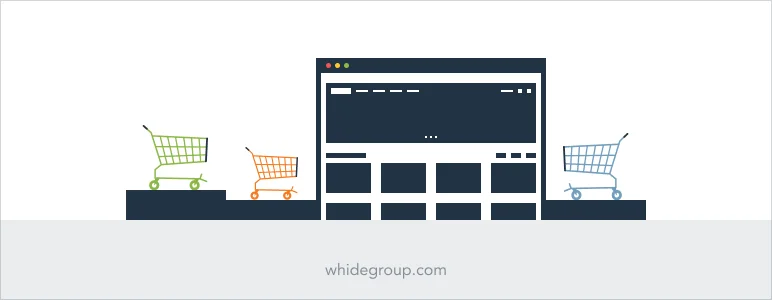
First things first, so when you plan to run an e-commerce business, it is mandatory to create an e-commerce website as the starting point. If you already know enough about the e-commerce website development process, you already know that this process is not overly complicated, but there is a certain way and definite protocols you have to follow in order to start an e-commerce successfully. Follow these steps to build an e-commerce website from scratch.
Get started with a domain name. It is not always obvious or required that you stick with your business name unless you operate a traditional brick-and-mortar store and would like to advance your sales channels with an online solution. In this case we suggest you choose a domain name that will allow customers to clearly associate an e-commerce store with your offline business. Make sure the domain name is easy to pronounce and spell, and is short and easy to remember. It is better to avoid hyphens and doubled letters.
There are several popular registrars like Google Domains, A2 and GoDaddy. You can visit any of these websites, search for a desired domain name and look through the suggestions.
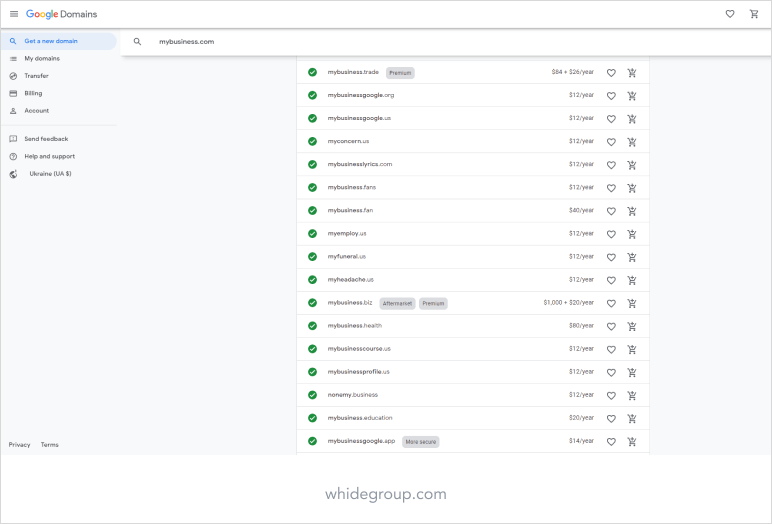
When you choose a SaaS platform as your e-commerce solution, for example Shopify, you can either purchase a domain name via this e-commerce website builder or connect a domain name purchased at another registrar.
Hosting services are available from a wide range of service providers, offering to host a website anywhere from $10 to $1000+ per month on average. You can consider dedicated, shared, cloud, virtual or managed servers for your project.
Each e-commerce platform has defined system requirements which you have to adhere to fully in order to ensure stable and trouble-free website operation. Of course, if you decide to proceed with a SaaS e-commerce solution, you don’t need to worry about the hosting as it is handled by the company-provider by default.
A professional e-commerce development company will help you choose the most suitable hosting for your project in terms of budget and its capabilities, since they know how to build an e-commerce website from scratch that will remain fully functional and work smoothly even under high loads. Don’t hesitate to ask questions and clarify all the details unless you feel confident with the selected hosting provider.
As your e-commerce store is a representation of your business, an instrument to engage customers and make profits, the importance of website design is undeniable. In times when customers have a lot of options and alternatives for products and services, it is essential to focus on the impression users get when visiting your website. Simply having a good looking interface is nothing if customers don’t understand how to interact with your store.
UI/UX design comes to the rescue in this case. It works in two aspects – UX represents website functionality and its accessibility for the user, and UI helps your store to be different and stand out among competitors.
Unfortunately, many companies skip this step, thinking that ready themes and templates will work well for their business. But there is no universal solution for everyone, really. Creating an interface that will “speak” precisely with your customers without words, will be guiding them to the purchase and leaving them satisfied is the most valuable thing your website can provide.
UX stats show that 88% of online shoppers say they wouldn’t return to a website after having a bad user experience. This is a major reason to invest time and money to create an exclusive design for your e-commerce business at the starting point of your business development. This will simplify customer interaction with the website, inspire them to spend more time browsing your store, pay more attention to the products or services you offer and will result in higher sales and raise conversions.
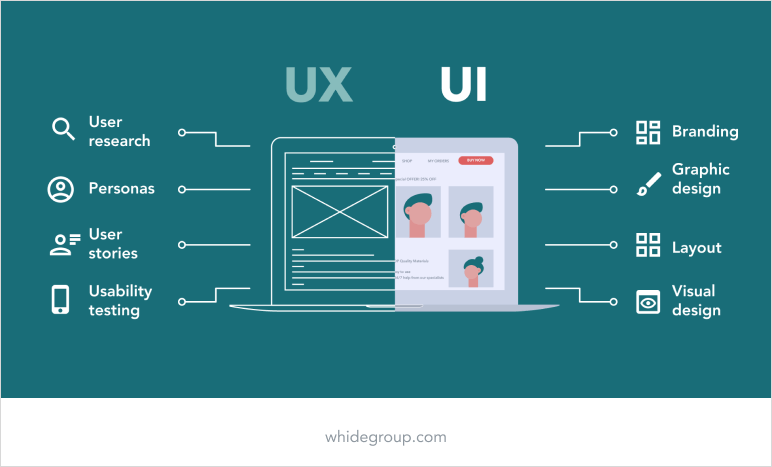
The e-commerce homepage and products page design are considered to be the most important for your store. The first one builds the initial impression about your brand and products you offer, and the second is designed to help customers make a decision about the purchase. You definitely want to earn your customers’ positive outlook when it comes to your store – make them loyal and convert sales in the most efficient way possible. So, pay special attention to the design of these two pages.
When the project specification and website design are ready, it is time to proceed to implementation of the design and website functionality, namely, e-commerce website development. Keep an eye on making your store mobile friendly first. Why is this so important? Because 70% of web traffic comes from mobile phones now. Usually every e-commerce project requires custom back-end development due to the specific business requirements and e-commerce processes you need to handle in the back office. Maybe you want to customize a packing slip template, or perhaps you’d like to include a return label for each order out of the box. Maybe there is a need to create a custom product type for your store and more.
Now it is the right time to add products to the store and fill it in with content. That will make your store look finalized and complete. Add product photos and descriptions, write in information for static pages – Privacy Policy, Terms & Conditions, About Us pages and others.
How many products should an e-commerce site have?
The short answer is “As many as will make your customers interested without making your store look spammy and overwhelmed”. You can start e-commerce website development by adding the most popular products and products you may offer as upsells to ensure sales growth, and then expand the product assortment.
E-commerce website development is a multifaceted process. Along with the traditional development and customization of the default features of the platform you choose for your e-commerce store, your e-commerce website may require an integration with third party software.
You can enrich the store with business systems like customer relationship management (CRM), enterprise resource planning (ERP), and product information system (PIM). Seamless integration can hugely increase business efficiency – save time, reduce costs, improve the customer experience and automate many back-office functions.
Some systems offer ready solutions for integration with specific e-commerce platforms. These are apps and extensions. However, in other cases you will need assistance from an e-commerce development company to implement integration by means of custom e-commerce website development.
How to make an e-commerce website successful? Simply said, when your e-commerce store complies with customer preferences and meets their needs, it makes them feel happy, leads to making a purchase, gains profits and makes your website successful. With this in mind, all the improvements and manipulations you make for your store need to have customer satisfaction as the final goal.
What an e-commerce website should have to make your customers feel happy – First of all, these are products your customers really want and need, and the second are the website features your customers value most. These are:
Well structured, clear and convenient navigation makes your store an effective tool for customers to find the product they are looking for. Use icons and widely accepted symbols, locate buttons and links in typical places, implement a tiered (exposing sub-categories upon hover or click on the main category) or mega menu (putting parent and subcategories upon initial menu dropdown) depending on the assortment and types of products you sell, etc.
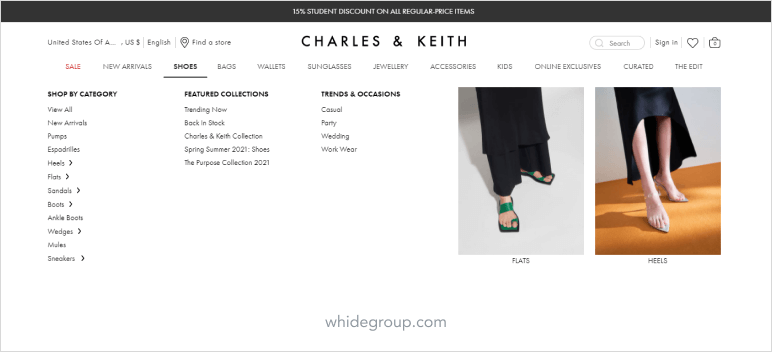
Besides the main website navigation, it is very important to provide powerful website search and filtration options as a convenient discovery method helps to improve conversions. It will be smart to ignore misspellings, offer alternatives if there is no such product the customer is looking for in the store, or even show product previews during the search. Your customers also want to filter products by size, color, price and other options which will narrow their choice and lead to their desired product faster. There are many ready technical solutions on the market you can implement for this purpose.
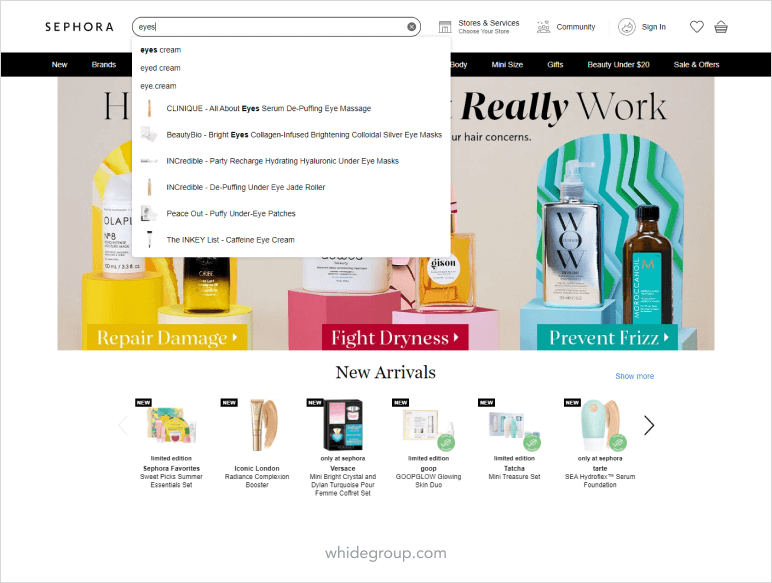
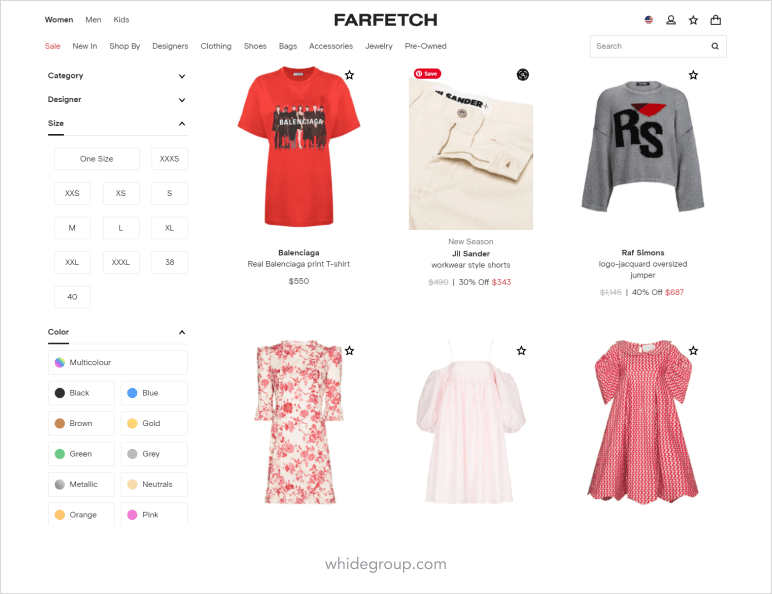
As we already mentioned, one of the strikes against e-commerce is the inability of customers to actually feel and touch the products you offer. Product videos and 360° view functionality can offer an alternative in this situation. Discovering products from different angles in action makes customers feel more engaged with the product you offer. From the other side, proper representation of what another person experiences and feels wearing your product or explaining how it works makes your website visitors feel more invested, leading to a higher chance of a purchase. Statistics say that 73% more visitors who watch product videos make a purchase.
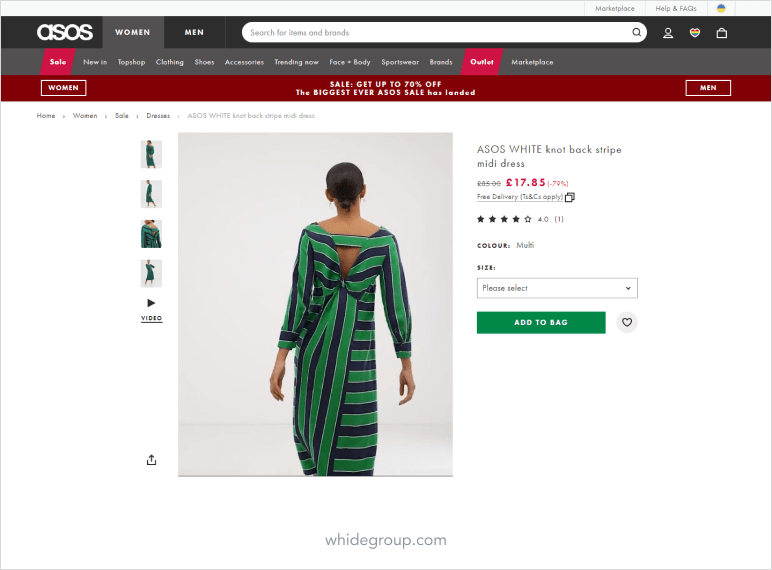
Reviews for products you sell in an e-commerce store are a powerful marketing instrument. They:
So, enable the reviews functionality inside your store. We also offer the option to integrate advanced features for reviews like the ability for customers to add their own photos or the integration of instagram feeds with customer generated content, showcasing your products.

To reach high conversions, it is important for e-commerce websites to minimize the number of steps that customers must take in order to complete their purchase. Pay attention to the optimization of your checkout and registration flow. We talk about these two actions in parallel because almost every website will ask their customers to login or create an account en route to the checkout. Don’t be too strict here – allow your customers to checkout as a guest or login using their social profiles, reduce the number of fields on the checkout page and more. It is better to ask additional questions after the person makes their order on your website.
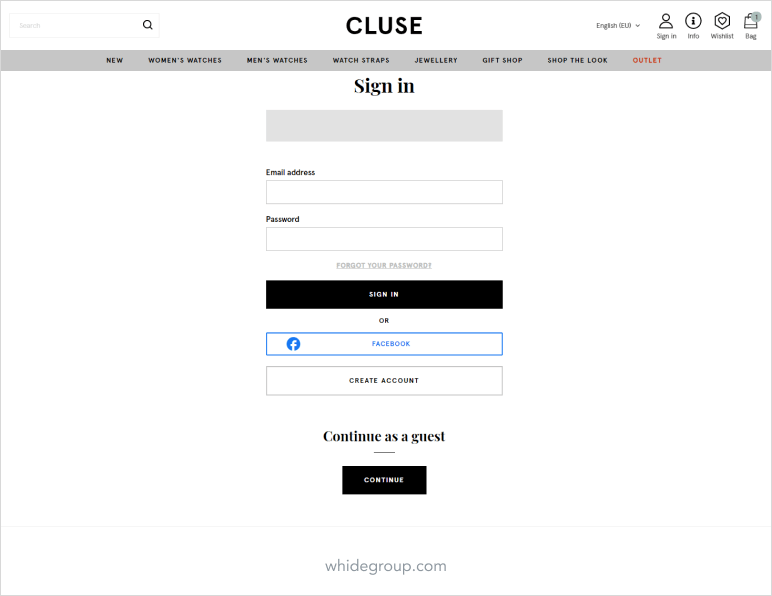
Let’s be honest – when you are shopping in a traditional brick and mortar store, you probably ask for the help of the shop consultant fairly often, right? You might want to ask about the sizing, conditions of the loyalty program, find out about when a product will get restocked and so on. So don’t restrict this possibility for customers of your e-commerce website. Live chat support acts like a virtual assistant that can help customers to choose the desired product, get advice on its use or receive answers on any questions about the order they have already placed. What’s more – you can integrate a chatbot with your online support system to reduce the workload of online consultants.
The choice of a shipping partner may differ depending on the location you’re selling from and shipping to. You do not need to implement all shipping options available on the market from the very beginning. At first, it will be enough to implement 1 to 2 of the most popular shipping methods (e.g. UPS, USPS, or FedEx). You can just add more as needed.
The choice of a shipping provider will also depend on the type of products you are selling. For example, the size and weight of the products, the presence of any transportation restrictions, etc. Make the final decision only after considering all these subtleties.
In addition, your forward-thinking plan should be to provide customers with the most flexible shipping rates. For example, you may offer free shipping to customers spending a certain amount of money per order, or to ones that order regional shipping. Or, perhaps you can give them the option to upgrade to faster shipping if they need the product faster.
You definitely need a payment gateway. More of that, to provide your customers with the best user experience, you should give them numerous payment options, so that at least one of them will fit the customer’s preferences.
Of course, PayPal has long been considered as one of the most popular choices for online shoppers. However, credit/debit card payments still win the competition. Today, there are numerous payment gateway integrations made to cover the needs of any customer as well as any merchant. So, before limiting your payment options to PayPal you should discover all the opportunities available on the market and find the most profitable options.
How to build a secure e-commerce website from scratch? Running an e-commerce business implies taking care of a large number of information sensitive processes. Some of them are happening when customers share their personal information with your store or when financial transactions happen. So when making a decision about how to build an e-commerce website from scratch, you have to thoroughly think about applying e-commerce best practices for your store as it relates to security.
To protect your business from fraud and identity theft, it is reasonable to implement a Secure Sockets Layer (SSL) certificate first. The primary reason why SSL is used is to keep sensitive information sent across the Internet encrypted so that only the intended recipient can access it. This instrument will help you provide reliability and build trusting relationships with your customers.

Another aspect you have to consider for your e-commerce website development is web server protection. Server security is responsible for ensuring the proper operation of your e-commerce store. Setting up ongoing server monitoring will help your website to always be available on the web, determine if there are possible vulnerabilities hanging over your store, eliminate chances of hacker attacks and more. The stable and smooth operation of your e-commerce website will also maintain loyal relationships with your customers.
Last, but not least, is e-commerce performance optimization. Why does it matter? 80% of users say a slow loading website is more frustrating for them than a temporarily down website. Along with this 1 in 3 shoppers leave a website if they wait more than 5 seconds for a page to load. It would be a strategic mistake to skip this step if you spend budgets on website design, development and customization, pay thorough attention to usability improvements, but don’t optimize your store to make it faster and appealing for customers.
You will pay a high price if the functionality created for your e-commerce store goes live with malfunctions and errors. Separate from the Quality Control (QC) and Quality Assurance (QA) done to ensure accordance with the website’s functional requirements and best practices during the development process, it is vital to perform final testing when your e-commerce website development is completed.
To make your e-commerce website a success it is mandatory to set goals from the very beginning. These goals should be specific, relevant to your store, measurable, achievable and time/cost limited. E-commerce best practices advise using Key Performance Indicators (KPIs) to make the reach of business goals efficient, understandable and representative. Having metrics that show how well your brand is performing in line with its business strategy is a must for business performance monitoring.
Now that your e-commerce website development is done, the store is prepared, integrated with third-party solutions, filled with content and optimized for conversions, it is time to get ready for the launch. With so many aspects that form the e-commerce business, it is easy to forget something. So, here is what you need to do in order to make your e-commerce website launch smooth and trouble-free:
Take some time to check product descriptions and website banners, make sure the Terms & Conditions and FAQ pages are in place and totally clear, check copyright, your company contact information and do everything to make sure there are no “Lorem ipsum” texts, or spelling or grammar errors in your store.
You definitely want to be confident that taxes are set up right, emails can be sent and received, shipping is calculated properly, synchronization with third-party systems works seamlessly, your store can accept real payments and more.
Pay attention to all the links you have in the header and footer, sidebars and on different pages – make sure they all work and don’t lead to development or staging websites. If you have links to any external resources and services, make them open in a new tab.
Make sure your pages’ meta titles and meta descriptions contain the relevant information you want your potential customers to see when they find you in the search. They have to be compelling and tidy to make someone click on your links instead of your competitors’. Add descriptive alt tags for images to allow search engines to “read” and understand what they display.
Analytics tracking and monitoring is essential to be done from day one because it will give you invaluable insights about your website visitors and customers. By having this data on hand, you can identify the most high converting pages, make conclusions about what’s working best and modify your sales strategy accordingly.
Separately from regular, automatic backups you need to have set up for your website, it is necessary to back up all website files and the database right before deploying your website. The price of a mistake can be very high in such a case, so extra accuracy will only be beneficial.
Yes, now you are totally ready. This is the perfect time to make your website accessible on the Internet. Good luck!
With few points, but all of them important for website launch, this E-commerce Website Development checklist is a helpful instrument that clarifies pre-launch activities to be done for your store and will save your business from any possible mistakes that can happen while moving your website to live status.
There are no identical businesses and websites, of course. Above we have described the processes and steps that are essential to build and launch an e-commerce website in general. Whether you are starting an online retail business or going to create a large international store with multiple sales channels, you will need to take all these steps and advance functionality of your store with features specific to your business. For example, if you sell furniture and home appliances, you need to deal with shipments of large parcels which sometimes have a non-standard shape. If you are in an online grocery business and sell products by weight, it is essential to take that into consideration when charging your clients so you may want to have the option to modify an authorized sum.
In case you want to learn more details about how to build an e-commerce website from scratch depending on the business niche, check out these categories:
The two most obvious and expected questions we get asked by business owners are the cost and time required to create an e-commerce store. In general, these two points depend on the following aspects:
So how much does it cost to build an e-commerce website from scratch? In general, e-commerce website development for a store with basic functions will cost you around $10,000, while the price for custom or large-scale e-commerce store development will start at $50,000.
How long does it take to build an e-commerce website from scratch? A website with basic e-commerce functions will require a couple of months to complete and thoroughly test. For a more complex e-commerce store with powerful infrastructure and functionality, you will be looking at any time between 6 – 12 months. The timeline depends significantly on the number and level of specialists on the development team involved in the project.
Basic website
Advanced website
Custom website
Basic website
Advanced website
Custom website
Basic website
$10,000Advanced website
$10,000-$50,000Custom website
$50,000+Basic website
~2 monthsAdvanced website
3-6 monthsCustom website
6 months+Please, note that these calculations are averaged and don’t mean that your e-commerce project will necessarily fall into one of these categories.

Whether you plan to start e-commerce for a small business or create a large-scale e-commerce enterprise, you will need to pass through all the same stages of e-commerce website development – choose your niche and business model, select a product acquisition strategy, make up the list of requirements for your e-commerce, decide on a platform, find a reliable development service provider and work with them hand in hand till the launch and beyond to support and maintain your e-commerce business properly.
Dedicated to uncovering the question of how to build an e-commerce website from scratch, this article provides the full guidance on the process, steps, pitfalls, pricing and timeline required to develop an e-commerce store. You may still have some questions as each e-commerce business is unique, so feel free to contact us anytime to get all the answers you need – specifics of the e-commerce store development for your industry, cost and timeline, or the way we cooperate on such projects with our clients. We look forward to hearing from you!
Share This Article

 Challenges in Online Grocery Business: 10 Ideas You Should Consider to Survive...
Challenges in Online Grocery Business: 10 Ideas You Should Consider to Survive...
I appreciate you sharing this blog post. Thanks Again. Cool.
Thank you for this information. I have saved your website!